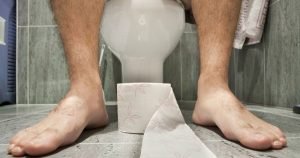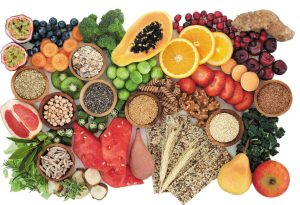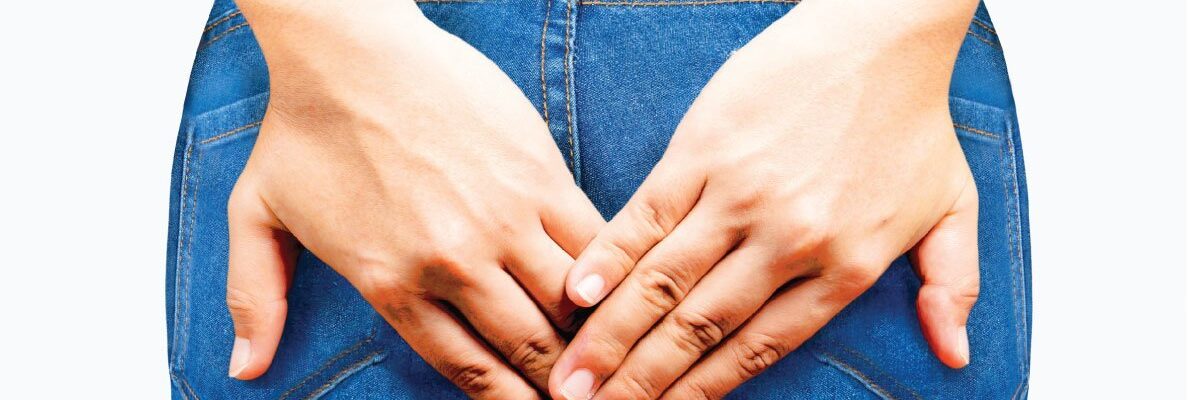Summary
Hemorrhoids, or piles, are a painful condition characterized by swollen and inflamed veins around the anus or at the end of the rectum. The term “hemorrhoid” comes from Old French and Latin words meaning “veins liable to discharge blood.” This condition occurs due to prolonged pressure on the veins in the anal area, often caused by extended sitting, straining during bowel movements, or activities that increase pressure in the abdomen.
Symptoms of hemorrhoids include pain, swelling, and bleeding, particularly during bowel movements. Itching in the affected area is also common and can add to the discomfort. Hemorrhoids are generally classified as internal (inside the rectum) or external (under the skin around the anus), with external hemorrhoids typically causing more pain and irritation.
For immediate relief, soaking in warm water, applying ice packs, and using anti-itch creams can help reduce inflammation and pain. While these remedies offer short-term relief, addressing habits that contribute to hemorrhoids—such as reducing straining, increasing fiber intake, and staying active—can help prevent recurrence and improve long-term comfort.
Table of Contents
Symptoms of Hemorrhoids

Hemorrhoids present a range of uncomfortable symptoms that can disrupt daily life. Recognizing these symptoms early can help in managing the condition effectively. Common symptoms include:
- Difficulty during bowel movements. Straining or experiencing pain when passing stool is a common sign of hemorrhoids.
- Pain around the anus. A sharp or throbbing pain may occur, especially during or after bowel movements.
- Intense itching in the anal area. Persistent itchiness around the anus is a frequent symptom, often caused by irritation of the swollen veins.
- Swollen, itchy, and painful lumps near the anus. External hemorrhoids can cause noticeable lumps that are sensitive to touch and may feel itchy or sore.
- Leakage of liquid stool. Hemorrhoids can sometimes prevent the anus from fully closing, leading to occasional stool leakage.
- Blood in stool. Small amounts of bright red blood on the stool or toilet paper are common with hemorrhoids, indicating bleeding from irritated veins.
These symptoms may vary in severity, but they are all signs that hemorrhoids may be present. If symptoms persist or worsen, consulting a healthcare provider can help confirm the diagnosis and provide guidance on effective treatments.
Types of Hemorrhoids
There are four main types of hemorrhoids, each with unique characteristics and varying levels of discomfort. These types include internal, external, prolapsed, and thrombosed hemorrhoids.
- Internal hemorrhoids. Located inside the rectum, internal hemorrhoids are generally not visible or easily felt. They are typically less painful and can resolve on their own. However, stool passing over these internal hemorrhoids may irritate them, potentially causing discomfort and bleeding during bowel movements.
- External hemorrhoids. External hemorrhoids form at the anus, directly at the site of stool exit. They appear as lumps or bumps around the anus and can be quite painful, especially when sitting. Although external hemorrhoids are not usually serious, they can be intensely painful and uncomfortable due to the pressure applied to the area during regular activities.
- Prolapsed hemorrhoids. Prolapsed hemorrhoids occur when internal hemorrhoids swell and protrude out of the anus. While they can sometimes be gently pushed back into the rectum, prolapsed hemorrhoids are often painful and may cause a constant feeling of fullness or irritation.
- Thrombosed hemorrhoids. Thrombosed hemorrhoids result when blood clots form within a hemorrhoid, either internally or externally. This type is recognizable by the pronounced swelling around the anus and can be extremely painful and itchy. Thrombosed hemorrhoids often require medical attention due to the severity of the pain and the risk of complications.
Understanding the different types of hemorrhoids can help in identifying symptoms and seeking appropriate treatment, as each type may require distinct management approaches. If severe pain or persistent symptoms occur, it’s advisable to consult a healthcare provider for effective relief and to prevent further complications.
Diagnostic Procedures for Hemorrhoids
Diagnosing hemorrhoids accurately helps in determining the best treatment approach. Several diagnostic methods are used to confirm the presence of hemorrhoids and assess their severity:
- Physical examination. A simple physical examination is often the first step. The doctor will inspect the anal area for external hemorrhoids, visible swelling, or lumps. This examination can help confirm external hemorrhoids and assess any visible inflammation or irritation.
- Digital rectal exam (DRE). In a DRE, the doctor gently inserts a gloved, lubricated finger into the rectum to feel for any unusual lumps, tenderness, or irregularities. This procedure helps detect internal hemorrhoids and assess any other potential concerns in the rectal area.
- Anoscopy. An anoscope is a short, tube-like instrument with a light at the end that allows the doctor to view the lower rectum and anal canal. It is particularly useful for diagnosing internal hemorrhoids and evaluating their size and location.
- Proctoscopy. Similar to an anoscopy but slightly more extensive, a proctoscopy allows for a deeper examination of the rectum. This test can help assess more extensive cases and may be recommended if other issues in the rectum are suspected.
- Sigmoidoscopy or colonoscopy. If the patient has additional symptoms, such as abdominal pain or unexplained changes in bowel habits, a sigmoidoscopy or colonoscopy may be recommended. These procedures allow for a full examination of the colon and rectum, helping rule out other gastrointestinal conditions.
- Imaging tests. In rare cases, imaging such as an MRI or CT scan may be used to rule out other causes of rectal or anal pain, particularly if symptoms are severe or if there are complications.
These diagnostic procedures help identify the type and severity of hemorrhoids, guiding doctors in creating an effective treatment plan. For those with mild symptoms, lifestyle modifications may be recommended, while more advanced cases may require medical intervention.
Complications of Untreated Hemorrhoids
If left untreated, hemorrhoids can lead to several complications that may significantly impact a person’s quality of life. While hemorrhoids are often manageable with early intervention, persistent symptoms should not be ignored. Here are some common complications associated with untreated hemorrhoids:
- Anemia. Frequent bleeding from hemorrhoids, especially internal ones, can lead to a gradual loss of blood over time. This can result in iron-deficiency anemia, causing symptoms like fatigue, weakness, and pale skin.
- Thrombosis. Blood clots can form within an external hemorrhoid, leading to a painful condition known as thrombosed hemorrhoids. Thrombosis causes significant pain, swelling, and inflammation and often requires prompt medical intervention.
- Strangulated hemorrhoids. If a prolapsed hemorrhoid (one that has fallen out of the anus) becomes trapped outside and loses blood supply, it can lead to strangulation. This is a serious condition that can cause severe pain, tissue death, and infection, requiring immediate medical treatment.
- Ulceration and infection. Persistent irritation can lead to open sores or ulcers around the hemorrhoid, increasing the risk of infection. These infections can cause further pain, redness, and swelling, sometimes requiring antibiotic treatment or other interventions.
- Fecal incontinence. In severe cases, untreated hemorrhoids may weaken the anal sphincter muscles, potentially resulting in fecal incontinence. This makes it challenging to control bowel movements and can significantly affect daily activities.
- Chronic discomfort and pain. Untreated hemorrhoids often worsen over time, leading to chronic pain and discomfort, especially when sitting or during bowel movements. This ongoing pain can impact quality of life and make regular activities more difficult.
Prompt treatment and management of hemorrhoids can prevent these complications and improve long-term health outcomes. Consulting a healthcare provider early can help individuals receive appropriate treatment and avoid the progression of hemorrhoid-related issues.
Causes of Hemorrhoids

Hemorrhoids are caused by increased pressure on the veins in the lower rectum and anus, which leads to swelling, inflammation, and the formation of hemorrhoidal tissue. Here are the direct mechanisms that cause hemorrhoids:
- Increased intra-abdominal pressure. Any condition or activity that increases pressure within the abdomen directly affects the veins in the rectum and anus. This pressure forces blood to pool in these veins, causing them to expand and form hemorrhoids. This can occur during activities such as heavy lifting or even prolonged coughing.
- Straining during bowel movements. Straining creates intense pressure on the veins in the anal area, causing them to stretch and swell. Over time, repeated straining can lead to hemorrhoid formation, as the veins cannot withstand the constant force.
- Weakening of the supportive tissue in the rectum and anus. As we age, the connective tissues in the rectal and anal areas weaken, making it easier for veins to swell and form hemorrhoids. Pregnancy also contributes to this weakening due to hormonal changes and the increased pressure from the growing fetus.
- Poor blood flow in the anal region. Sitting for extended periods reduces blood circulation in the rectal area, causing blood to pool in the veins. Reduced blood flow weakens the veins, making them more susceptible to swelling and developing into hemorrhoids.
- Imbalance in muscle tone in the anal sphincter. The muscles that control bowel movements also play a role in supporting rectal veins. If these muscles are too tight or strained, they can compress the veins, leading to increased pressure and, eventually, hemorrhoids.
Understanding these causes can help in the prevention and management of hemorrhoids. Addressing these physiological factors through lifestyle modifications or medical intervention can help alleviate symptoms and prevent further issues.
Prevention of Hemorrhoids

Hemorrhoids are generally preventable, and one of the simplest methods is to keep stools soft to avoid excessive straining during bowel movements. This minimizes pressure on the rectal veins, reducing the risk of hemorrhoid formation. Here are additional strategies to prevent hemorrhoids effectively:
- Do not delay bowel movements. When you feel the urge to go, respond promptly. Holding it in allows stool to harden, making it more difficult to pass, which can lead to straining and increased pressure on the rectal veins.
- Avoid excessive straining during bowel movements. Straining increases pressure on the veins in the rectal area. Instead, allow stool to pass naturally, relaxing your muscles as much as possible.
- Exercise regularly. Consistent exercise helps maintain a healthy weight, reducing the pressure on the rectal veins when sitting. Physical activity also encourages regular bowel movements.
- Limit prolonged sitting. Avoid sitting for extended periods, particularly on hard surfaces, as this increases pressure in the rectal area. Stand and move around periodically.
- Drink plenty of water daily. Staying hydrated softens stool and makes it easier to pass, preventing straining.
- Eat fiber-rich foods. Include plenty of vegetables, fruits, and whole grains in your diet. Fiber adds bulk and softness to the stool, facilitating smoother bowel movements and reducing the need to strain.
- Consider fiber supplements if needed. For those who struggle to get enough fiber from food alone, fiber supplements can help maintain regularity and stool softness. It’s best to consult a healthcare provider to determine the appropriate type and dosage.
Implementing these habits can greatly reduce the risk of developing hemorrhoids and promote better digestive health overall.
Risk Factors for Hemorrhoids

Anyone can develop hemorrhoids, but certain groups have a higher likelihood of experiencing this condition. Those at increased risk include:
- People with a family history of hemorrhoids. Hemorrhoids may have a genetic component, meaning the condition can be inherited. If a person’s parents or close relatives have experienced hemorrhoids, their risk is higher.
- Individuals who sit for prolonged periods. People with desk jobs or those who spend extended hours seated, such as office workers, are more prone to hemorrhoids due to the increased pressure on the rectal veins from prolonged sitting.
- People who stand for long periods without rest. Just as sitting too long can be harmful, standing for prolonged periods without breaks can also increase the risk. Occupations such as security guards may experience this due to extended hours on their feet, which affects circulation and can put strain on rectal veins.
- Frequent heavy lifters. Regularly lifting heavy objects places significant pressure on the abdominal area, which can strain the veins in the rectum and lead to hemorrhoid development.
- Individuals with obesity. Excess body weight, especially in the abdomen, increases pressure on the pelvis and rectum, especially when seated. This pressure can contribute to hemorrhoids.
- Pregnant women. The growing uterus during pregnancy adds pressure to the veins in the rectal area, increasing the likelihood of hemorrhoids. Hormonal changes during pregnancy also contribute to vein relaxation, making hemorrhoids more common in expectant mothers.
Understanding these risk factors can help in recognizing preventive measures and developing treatment plans. By addressing lifestyle and occupational factors, individuals at risk can take steps to minimize their chances of developing hemorrhoids.
Hemorrhoids FAQs
Here are frequently asked questions about hemorrhoids, covering causes, symptoms, prevention, and treatment options:
- What are hemorrhoids?
Hemorrhoids are swollen and inflamed veins in the anus and rectum. They can be internal (inside the rectum) or external (around the anus) and may cause pain, itching, and discomfort, especially during bowel movements. - What causes hemorrhoids?
Hemorrhoids develop due to increased pressure on the veins in the anal area. Causes include straining during bowel movements, prolonged sitting, chronic constipation or diarrhea, heavy lifting, obesity, pregnancy, and age-related weakening of rectal tissues. - What are the symptoms of hemorrhoids?
Common symptoms include pain, swelling, itching, and bleeding during bowel movements. In severe cases, prolapsed hemorrhoids may protrude outside the anus, causing additional discomfort. - Can hemorrhoids go away on their own?
Mild hemorrhoids may resolve without treatment, especially with lifestyle changes like increasing fiber intake and staying hydrated. However, chronic or severe hemorrhoids often require medical intervention to prevent complications. - How can I prevent hemorrhoids?
Preventive measures include eating a high-fiber diet, drinking plenty of water, avoiding prolonged sitting, regular exercise, and responding promptly to bowel urges to avoid straining. - How are hemorrhoids diagnosed?
Hemorrhoids are diagnosed through a physical examination, digital rectal exam, or specialized tests like anoscopy or proctoscopy, depending on symptoms and severity. - What treatments are available for hemorrhoids?
Treatments range from home remedies (like warm baths and over-the-counter creams) to medical interventions, including rubber band ligation, sclerotherapy, infrared coagulation, and, in severe cases, surgical removal. - Can hemorrhoids become serious if untreated?
Yes, untreated hemorrhoids can lead to complications such as anemia (from chronic bleeding), thrombosis, strangulation, infections, and, in rare cases, fecal incontinence. - Are hemorrhoids permanent?
With proper treatment, hemorrhoids can be managed effectively, and symptoms often improve. However, without preventive measures, they may recur. - When should I see a doctor for hemorrhoids?
Consult a healthcare provider if you experience persistent pain, bleeding, or discomfort, or if hemorrhoids interfere with daily activities. A doctor can help diagnose the condition and recommend appropriate treatments.


